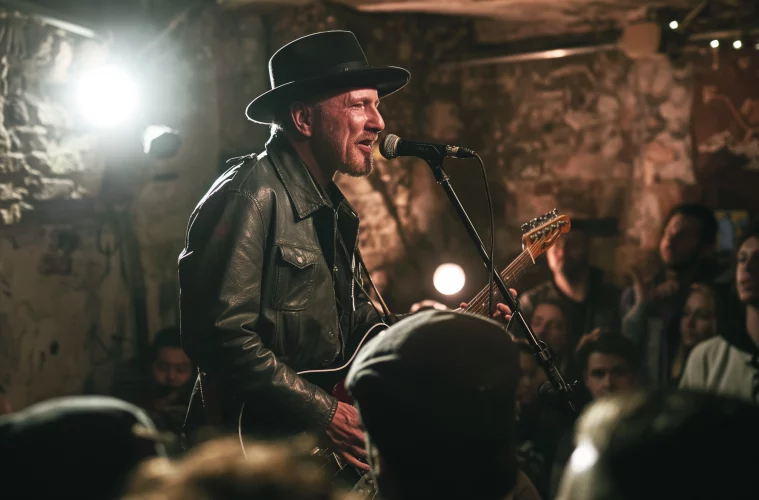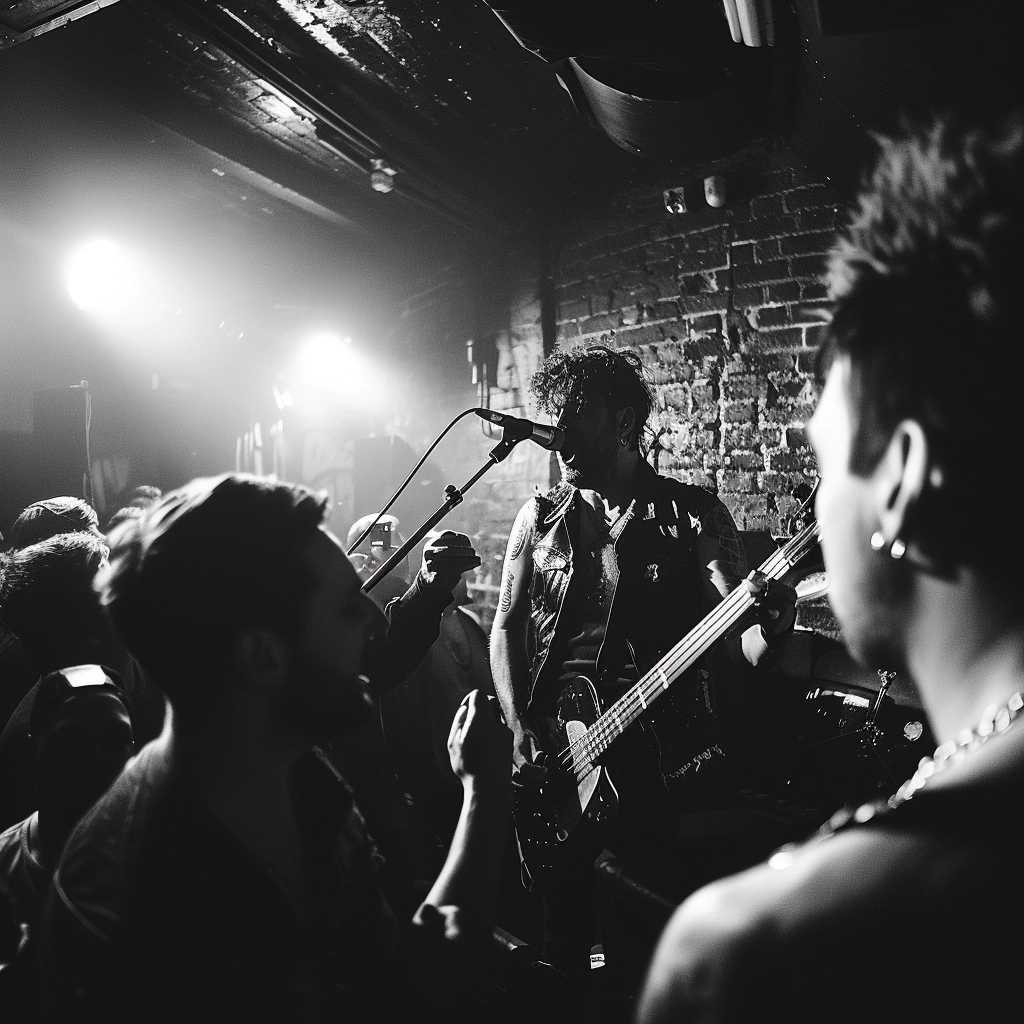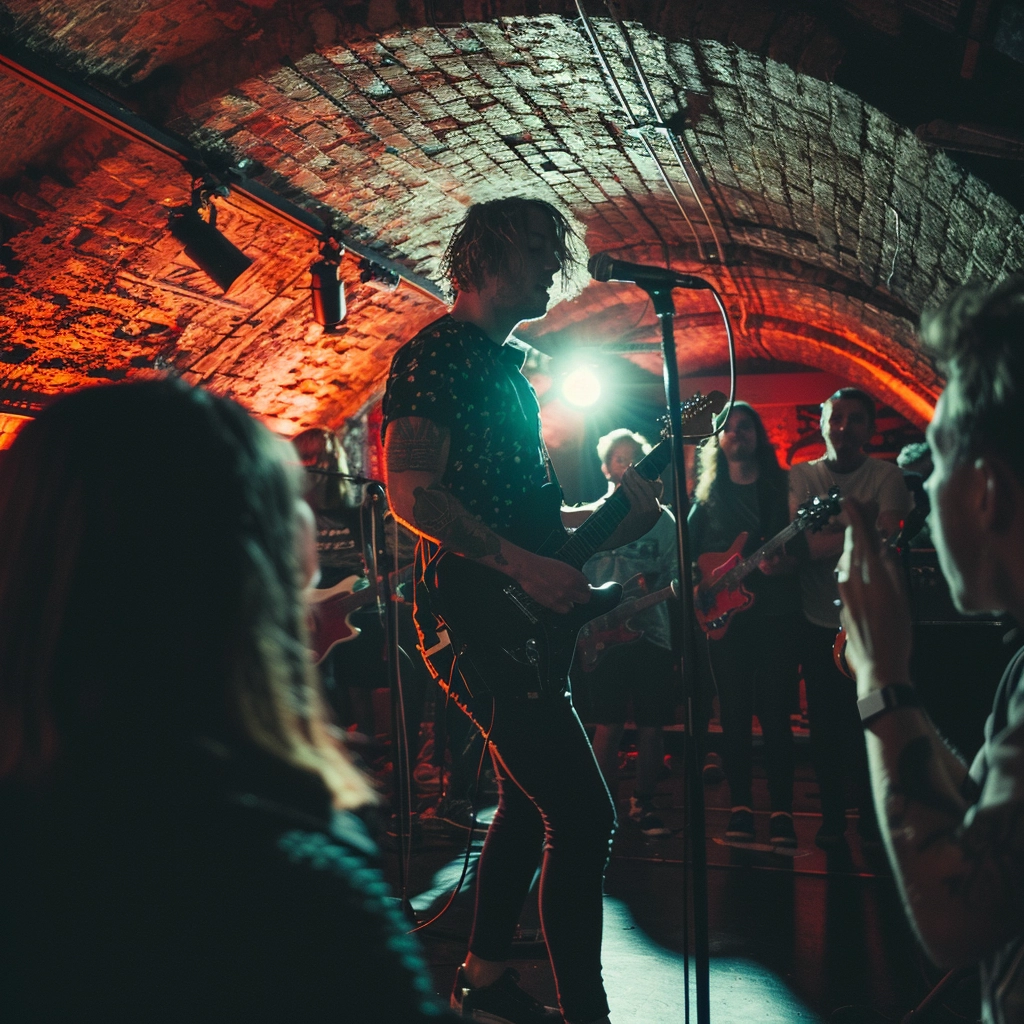Unpacking London’s Alternative Music and Underground Gigs Scene
London’s music scene, with its rich tapestry of sounds, genres, and cultures, stands as a beacon of counterculture and alternative music. The city’s history, pulsating with the rhythms of rebellion, innovation, and collaboration, paints a vivid picture of an underground ethos that has not only endured but thrived through the decades.
This exploration delves into the essence of London’s alternative music and underground gigs scene. It traces its roots from the 1960s counterculture to its current digital resilience, highlighting key venues, community dynamics, and the continuous evolution that keeps the scene vibrantly alive.
Origins in Counterculture
The genesis of London’s underground music scene is deeply intertwined with the global counterculture movement of the 1960s, a period marked by socio-political activism, artistic experimentation, and a yearning for a deeper, more authentic connection to music and each other.
In London, this era was epitomised by the psychedelic sounds that echoed through historic venues, laying the groundwork for a culture of resistance and creativity. This was a time when music was not just entertainment; it was a form of socio-political expression, a means to challenge the status quo and envision new possibilities for society.
Evolution of the Music
From the psychedelic rock of the 1960s to the punk explosion of the late 1970s and onto the electronic and techno waves of the 1980s and 1990s, London’s music scene has been characterised by its remarkable adaptability and cross-genre diversity. Each musical evolution brought with it a new layer of complexity and richness to the scene, influenced by global sounds and local innovations. This cross-pollination of genres has created a unique sound that is difficult to categorise but easy to recognise as distinctly London’s own.
Venues: The Heartbeat of the Scene
Central to the vibrancy of London’s alternative music scene are its venues. From historic pubs that have hosted generations of music legends to immersive clubs that offer a sensory overload of sights and sounds, these spaces are more than just buildings; they are the lifeblood of the community. They serve as incubators for emerging talent, spaces for experimentation, and sanctuaries where the norms of the outside world are suspended in favour of a shared musical euphoria. Discover some of these iconic locations through a list of underground music venues in London.
Community and Collaboration
At the core of London’s underground scene is a spirit of collaboration and communal living that transcends the music itself. This is a community where artists support each other, where fans are as much a part of the creative process as the musicians, and where events often feel like a gathering of friends rather than a commercial transaction. This ethos of collaboration has fostered an environment where creativity flourishes, unhampered by the constraints of commercial pressures.
Adaptation to the Digital Era
The transition to the digital era has been a double-edged sword for London’s underground music scene. On one side, the proliferation of digital platforms has democratised music production and distribution, enabling artists to reach global audiences without the need for traditional gatekeepers. This has led to an explosion of creative output, with London’s underground artists at the forefront of experimental and genre-defying music.
On the other side, the digital landscape has posed challenges for live venues and the communal experience of music. In response, the scene has adapted by leveraging digital tools to enhance live experiences, from streaming gigs to using social media for deeper fan engagement and community building. Explore London’s vibrant alternative scene further with this detailed guide.
Nurturing Talent and Creativity
London’s underground scene is not just a platform for showcasing established artists; it is a fertile ground for nurturing emerging talent. Venues, record labels, and community networks all play a role in supporting up-and-coming artists, providing them with the resources and exposure needed to develop their craft.
This nurturing environment ensures that the scene remains dynamic and constantly refreshed by new ideas and perspectives. Explore more about nurturing spaces through a guide on London’s best independent venues.
The Global Influence and Legacy
The influence of London’s alternative music scene extends far beyond its geographical boundaries. Through the years, it has exported its sounds and ethos across the globe, influencing music scenes and inspiring musicians worldwide. The legacy of London’s underground is not just in the music it has produced but in the spirit of innovation, resilience, and community that it embodies. For an in-depth look at this influence, particularly in the techno scene, consider reading about [London’s Underground Acid Techno Scene].
London’s alternative music and underground gigs scene is a complex ecosystem characterised by its rich history, diverse musical evolutions, iconic venues, and a strong sense of community and collaboration. It’s a scene that has managed to both influence and adapt to global trends, all while maintaining an enduring underground ethos. As we delve deeper into the specifics of this vibrant landscape, it becomes clear that London’s contribution to the world of music is both profound and far-reaching, a testament to the city’s enduring spirit of creativity and resistance.
Resilience Through Innovation
The resilience of London’s underground music scene is perhaps best exemplified by its response to recent global challenges, including the COVID-19 pandemic. Faced with the closure of live venues and the suspension of gigs, the community rallied to find innovative ways to keep the music alive.
Online live-streamed gigs, virtual festivals, and collaborative projects emerged, ensuring that the music did not just survive but thrived. These adaptations not only kept the community connected during difficult times but also showcased the scene’s ability to innovate and evolve in the face of adversity.
Cultural Richness and Eclectic Exploration
The cultural richness of London’s alternative music and underground gigs scene is a testament to the city’s diversity. Here, one can find a mosaic of sounds ranging from grime, dubstep, and techno to folk, jazz, and beyond. This eclectic mix is a reflection of London’s global population and the scene’s openness to exploration and fusion. It’s a place where traditional genres are reimagined, and new sounds are born, driven by a spirit of experimentation and a refusal to be confined by labels.
Final Thoughts
Reflecting on London’s vibrant alternative music and underground gigs scene, it’s clear that its essence transcends mere musical genres or venues; it embodies a rich tapestry of cultural identity, innovation, and resilience. Despite the challenges posed by the digital era, the scene thrives, leveraging technology to enhance its reach while preserving the communal spirit and intimacy of live performances. The physical venues, the lifeblood of this ecosystem, continue to foster a sense of belonging, serving as crucibles for creativity and collaboration.
At the heart of London’s underground scene is its community—a diverse collective bound by a shared passion for alternative sounds and the pursuit of artistic expression. This unity in diversity ensures a continuous infusion of fresh ideas and perspectives, making the scene a dynamic and evolving entity. Its global influence highlights London’s role as a cultural hub, where cross-cultural exchanges fuel innovation and global trends.
As the scene moves forward, its resilience and adaptability signal a bright future grounded in its core values of creativity and community. The enduring appeal of London’s underground music scene lies in its ability to connect people, transcending temporal and spatial boundaries. It remains a testament to the power of music as a universal language of expression, unity, and resistance, echoing through the streets of London and beyond, inspiring future generations to keep the beat alive.



